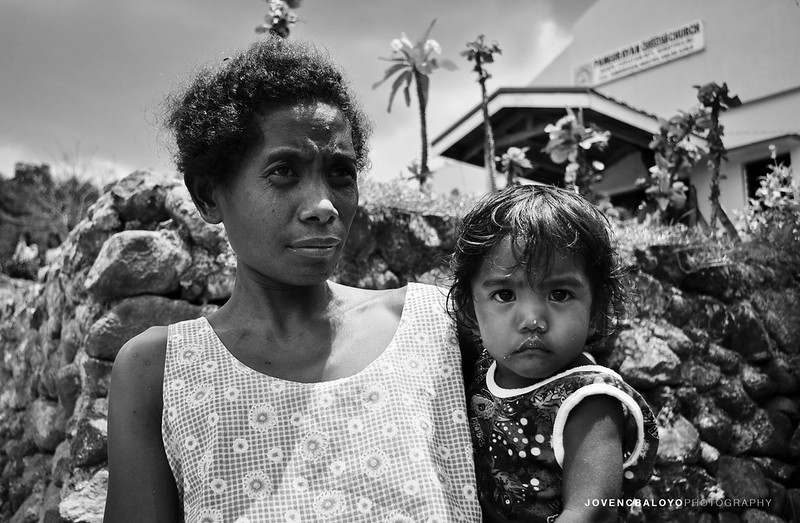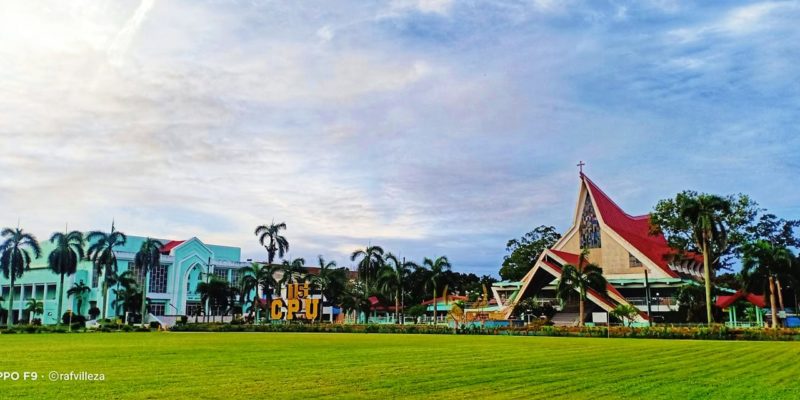Author’s Note: I wrote this term paper during my seminary years. Again, readers must consider that I wrote this in the Philippine setting within the Convention of Philippine Baptist Churches. I hope this paper will awaken our hearts and minds to serve people experiencing poverty.
INTRODUCTION
No less than the Lord Jesus Christ himself said that the poor would always be with us. While this is not the full context of the phrase, the poor are indeed ever-present in our society, much more so in the church.

Because of the reality that poverty is perennial, some churches might have consciously or unconsciously neglected the poor in favor of “God-glorifying” programs.
After going through the many urban and rural pastoral or church issues confronting the church today, the author chose to critically observe the church’s commitment to the poor.
The milieu of this paper is in the context and auspices of the Convention of Philippine Baptist Churches (CPBC), of which the author is a member. The particular scope of the topic reflection would be the churches where the author had attended.
How is the church’s commitment to the poor today? Do our churches continue to appropriate what Jesus Christ appropriated to himself, the prophecy of Isaiah 61:1-2: “The Spirit of the Lord is upon me because he has anointed me to preach good news to the poor. He has sent me to proclaim release to the captives and recovering of sight to the blind, to set at liberty those who are oppressed, to proclaim the acceptable year of the Lord” (Luke 4:18-19).
Do our churches love their neighbors more than before, following one of Jesus Christ’s greatest commandments: “Love your neighbor as you love yourself”?
Because this is not full-blown scientific survey research that would use a tool to measure the commitment of some CPBC churches towards the poor, the author employs “critical observations.”
Lest we might miss, the issue discussed in this paper is not the “poor” per se but the “commitment towards the poor” of some CPBC churches.
This paper intends to examine and discuss our churches’ current and existing commitment to the poor. It considers some circumstances in which the poor are marginalized inside the church and ends with several practical suggestions on how our churches could be in solidarity with the poor.
Understanding the Poor in the Church
In this paper, the poor may have nothing or very little regarding material wealth, opportunities, and social status. They lack the basic needs of food, clothing, and shelter.
In the church, the poor may refer to those with nothing to offer or who can only give meager offerings. One does not have to be entirely destitute to be considered ‘poor’ because there will always be people who belong to the lower economic rung in a church community.
Mr. Harold Wilke, director of the Healing Community, a program of the New Samaritan Corporation, in his article, “Mainstreaming the Alienated: the Church Responds to a ‘New’ Minority,” describes the poor as the societal alienated persons who are far too often rejected by the local congregation and responded to, if at all, primarily in terms of a “mission” on the part of the church to these groups — to alcoholics, the mentally disabled, the physically disabled, returnees from mental hospitals, the violence-prone, former prisoners, and the aging.
He added that these are the persons who are wounded or ill on the road to Jericho, wherever we travel. On this road, the church is far too often not the Good Samaritan but the priest and the Levite passing by on the other side.
If we study the Gospels, we discover that they have much to say about the economically poor (and the wealthy), although they also allude to the spiritually poor. In a deeper sense, whether the Gospels speak on the poor (and the wealthy), we can see that they always turn our attention to the disciple of Christ and the response to the economically impoverished.
Over and over again, the emphasis is on Jesus’ disciples being compassionate, having great sensitivity to the poor, and being quick to open their hands to help. These could be observed in several miracle healings that Jesus Christ administered. Peter and John’s healing of the cripple beggar at the temple gate is another example.
In his book, “Foundations for Purposeful Church Administration”, Alvin J. Lindgren explains:
“If the church is to be an extension of the ministry of Christ, and not simply to proclaim in words that Christ came to minister, then the church must recognize that it exists to serve (Matt. 20:27; 23:11; Mark 10:44)… to be an extension of Christ’s ministry—his very body—the church must take seriously the responsibility of being a servant.”
Applying to him the words of Isaiah, Jesus Christ proclaimed his mission to preach to the poor. If the author can interpret literally, then the poor in Luke 4:18-19 may be taken as those who have not heard the good news, captives, blind, and oppressed.
Time and again, without deeper consideration of their context, some churches and institutions have used these passages to emphasize (or even overemphasize) their ministry to the poor.
One cannot assume that poverty is a result of laziness or wickedness. While laziness could cause poverty to arise, other times, it is due to sinful actions of other men, such as usury or extortion (Prov. 28:8), greed (Isa 3:14-15), unfair labor practices (Jer. 22:13), oppression (Amos 4:1), and persecution (2 Cor. 8:1-2).
Like our brethren in calamity-stricken areas, poverty can also be caused by natural disasters. It can also be due to voluntary choice, as in the case of Jesus (Luke 9:57-58) and his apostles (Mark 10:28). Poverty has many causes, and both Moses and Jesus Christ taught that the poor would be with us (Deuteronomy 15:11 and Matthew 26:11).
Patronage or Solidarity with the Poor?
It cannot be denied that the ministry of the church is very biased towards helping the poor. In our churches, we gather benevolence offerings every month after the communion.
Every December, we collect white gifts in kind and cash for distribution to recipient families. As a church, we respond to cries for financial help because of fortuitous events by gathering special offerings.
Big city churches, like the University Church, regularly conduct medical and dental missions to nearby towns and barangays. Calvario Evangelical Church (now Janiuay Evangelical Church) is one church that, through their cooperative, has successfully battled the loan sharks in the Janiuay public market and came up with poverty alleviation and sustainable development in the community.
When conducting all the pro-poor church activities mentioned above, the church must examine whether these actions are mere patronages to the poor or solidarity with them.
Are our acts for poor families vehicles out of poverty or merely “pantawid-gutom” (hunger alleviation)? Do our benefactors see the church as merely an alms giver or a church pouring itself towards helping the poor?
Patronage giving is just giving a part of yourself while remaining comfortable in your current condition. The easiest way to help the poor is to draw a coin in your pocket and place it on the open palm of the poor.
The gathering of white gifts, benevolence, and financial help are reduced to mere symbols of giving when the church fails to see a person or a community freed from the shackles of poverty. Has our church become satisfied with symbolic giving such as these because, in the present situation, we cannot see a very concrete, substantial, and genuine concern for the poor?
If the church fails to make a lasting impact on the lives of the poor and sees fulfillment in patronage giving, then it seems that mendicancy is what the church might be institutionalizing.
Solidarity with the poor could be metaphorically illustrated in the example of Christ in Philippians 2:7, where he gave up all he had and took the nature of a servant. In his book, “Jesus on Social Institutions”, Shailer Matthews writes:
“If the church is really to institutionalize the spirit and attitude of Jesus it must be more than one of many agencies of scientific social technique. By its origin and history it stands committed to a faith in God as love. Only thus can it be said it have the mind of Christ. And only as it makes such faith contagious and controlling is it following in his way…
…For this the church ought to stand, not only in the case of people, but in the case of group action. To express this attitude in social activity is something more than to relieve the unfortunate. It is to remove the causes that produce human suffering. It is not enough to play the Good Samaritan on the road from some Jerusalem to some Jericho—the road itself should be policed. It is not enough to save brands from the burning—we must put out the fire”
Here, Matthews challenges the church to launch not only into a holistic ministry but also into a church “pouring” or “emptying” itself into the community, especially those in poverty.
Again, reading through the example of Christ’s kenosis in Philippians 2, the church (CPBC churches, as well) faces the question of to what extent it should “pour” or “empty” itself into dealing with the poor.
Ideally, it is a church arising from her comfort zone and becoming uncomfortable for the comfort of the poor. True, it would be a struggle, but I am convinced that our churches must help create and help a culture of solidarity with the poor. This could be a lasting guarantee that the dignity and well-being of our society’s poor and marginalized will be uplifted.
This calls for more interaction among the various people and groups in civil society, with the poor as the focus. We must be able to engage in strong advocacy and continuously mobilize and activate society and government to express solidarity with the poor and the underprivileged.
Our churches need to demonstrate their commitment to solidarity with the poor through concrete options, choices, programs, and policies. I believe that our churches must move beyond mere patronage and towards genuine solidarity with the poor.
Marginalization of the Poor within the Church
It may sound ironic, but the marginalization of the poor within the church is happening. In terms of fellowship, the poor have to make a lot of effort to feel belonging. In city churches, where the disparity between the rich and poor is great, the poor are seen at a particular spot in the rows of pews.
From the time of Jose Rizal until now, the rich members in their beautiful clothes and jewelry usually take the front pews while the poor members sit at the back. Poor church members who have done odd jobs with rich church members might never have the chance of getting elected as officers of the church.
After the threefold amen has been sung and the congregation begins to go out, the poor hardly receive handshakes from rich people because, as if on cue, some rich members would gather among themselves to share what new things and “blessings” they have acquired lately.
Only a few of the rich church members have a genuine concern for the poor and would take time to mingle with the least of their brethren.
Our churches have ushers, and we are happy that we have members who see ushering as a gift and ministry. It is through ushering that the church begins to express her hospitality. In her book, “Making Room: Recovering Hospitality as a Christian Tradition”, Christine Pohl emphasizes that “hospitality is central to the meaning of the gospel.” She writes:
“Jesus’ ministry and proclamation of the kingdom are inexplicable apart from issues of hospitality; Paul urges fellow disciples to welcome one another as Christ had welcomed them; the writer to the Hebrews enjoins readers not to neglect to show hospitality to strangers, for like Abraham and Sarah they may be entertaining angels unawares; and the letter of James offers a powerful critique of showing partiality to the rich at the price of the poor.”
Pohl stressed that hospitality involved attending to the physical, social, and spiritual needs of strangers. It meant not only offering food and shelter but also recognizing strangers as persons of equal worth and dignity. Hospitality was also a key practice in transcending national and ethnic distinctions in the church.
Do our churches still value hospitality, as Christine Pohl had expressed? Or has our hospitality been relegated to mere door greetings, handing out worship service programs, and leading people to a vacant seat?
According to Pastor Rick Warren, creating an atmosphere of belongingness for a newcomer is a deciding factor in whether or not the newcomer will return to join the church fellowship.
I believe that hospitality in the church is fading as a significant practice. Attention is still paid to the needs of strangers, especially the poor, but that attention is diffused and seems far off from the language and practice of hospitality, as it seems in the gospel or as a Filipino trait.
The marginalization of the poor within the church could be understood by knowing the quantifiable bases of empowerment as proposed by Norman Uphoff in his article, “Some Analytical Issues in Measuring Empowerment for the Poor, with Concern for Community and Local Governance.”
Gleaned from his quantitative study on people empowerment, we could appropriate Norman Uphoff’s five categories of resources or assets that can be accumulated and used to gauge whether our poor church members are marginalized or attaining empowerment. The six are:
- Economic resources (power bases)—The poor members of the church need to be assessed in terms of economic resources. Have they shown control over resources that would allow them to become productive and sustain their daily lives?
- Social resources — social status or standing, based on social roles and/or on meeting criteria considered worthy of respect, esteem, and deference. Such ‘goods’ can be simply ‘consumed’ or can be used to meet goals, in which case they are power bases.
- Political resources are primarily a consequence of occupying authority roles, entitling people to claim that they are speaking in the name of the church or organization and can use whatever resources institutions have to enforce decisions. Being able to influence the exercise of authority and achieve objectives, thereby, through voting or any other means, represents power within the domain of church politics.
- Informational resources – knowledge of the Christian faith that is productive or beneficial for others and thus desired by them, reflecting the adage that “knowledge is power” or, better yet, “Biblical knowledge is spiritual power.” Do our poor saints gain sustainable equipping in Christian life, social awareness, advocacy, and continuous learning?
- Moral resources are the legitimacy given to decision-makers, decisions, and their roles or the system of governance that leads people to defer to and accept others’ decisions as right and proper.
How independent are they when they take part in the church’s decision-making?
Can they vocalize their stand on some vital issues in the church’s life without fear of being reproached by those on the opposite side, more so the rich church members?
CONCLUSION
Considering the present realities of CPBC churches’ commitment to the poor, the principles that should guide us in our response to the plight of the poor must be carefully and clearly laid out.
What changes need to be made in the consciousness of our churches so that they are oriented toward greater commitment to the poor? What transformation and creative orientations are required in the praxis of the church?
I believe that we need to rediscover that the purpose of the church is to increase the love of God and neighbor. Multiplying and magnifying the love of God and neighbor remains the fundamental challenge of our church.
It seems that love of neighbor remains highly selective in some of our churches. Some church members would prefer joining a group with members in a clique regarding social status, jobs, interests, or business. Our churches need to check their commitment to the poor. The challenge is to be completely immersed in God’s work of loving mission to be involved in the plight of the poor.
Dr. Bernabe Pagara’s dissertation enumerates several recommendations that could be well applied by our churches in reinventing their commitment to the poor. Dr. Pagara writes:
…Having known the specific factors and manifestations of poverty that affect the poor, the researcher suggests the following recommendations for further study and actions that may aid in properly and effectively exercising the Church ministry to the poor. These recommendations are as follows.
- The churches should be educated and equipped about the issues of poverty and the struggles of the poor through regular seminars, workshops, and literature.
- There is a need to manifest visible and transparent Christian witness in properly exercising church funds, particularly for the poor.
- There is a need to improve the procedure and the practice of Christian giving and stewardship among the churches.
- There should be a united effort, with a sense of accountability, to be made at the denominational level to address the issues and the problems of the poor and poverty.
- The Church should adopt the apostolic diakonia (service) model, which reflects sacrificial attitudes and a caring community.
- The Church should discover and exercise the neglected incarnational gifts – sharing, caring, and giving (cf. Rom. 12:8-9).
- The adoption of a deprived community by a rich local church to serve as a catalyst.
- The churches should practice the stewardship of the earth’s resources.
- A simple lifestyle for the members of the Body of Christ.
- The churches should show solidarity with the poor in every way and participate in their struggles against injustice.
- An additional study needs to be conducted on how churches participate in the aspects of social ministry.
- There should be solidarity among Christian congregations on the issue of poverty and injustice.
What does it take to be committed or in solidarity with the poor? Writing in the “Asian Christian Views on Suffering in the Face of Overwhelming Poverty and Multifaceted Religiosity in Asia”, Andreas Anangguru Yewangoe, an Indonesian theologian, concludes:
“Living in solidarity with people also demands confession of sin from the church. At the same time, they must let their prophetic voice be heard, based on the conviction that God has reconciled Himself with man. This means that critical voices are directed not only to the “oppressors,” or the oppressive system but also against all human efforts to release themselves from the bondage of suffering.
Let the church be the Church of the Cross. Also, let the church be the church that always remembers Jesus’ suffering and death, but at the same time, it also opens its eyes to see human suffering and opens its ears to hear human crying. God cannot be experienced in the church if He cannot also be experienced outside the church, in the midst of world miseries.
Becoming the Church of the Cross does not, therefore, mean making the church a kind of masochist church, enjoying the beauty of the Cross, but rather, a church taking part in human suffering, miseries, longings, and hopes. As the bearer of the Cross, the churches would betray their true nature if they remained indifferent to the people and their sufferings.”
From my six years of experience in process documentation research, staying in several depressed villages of Antique and Iloilo provinces, spending time with the urban poor along South Super Highway in Parañaque, Bicutan, and Quezon City, and my ten years of experience in two local churches, I am deeply aware of my “poverty” in actualizing a sustainable and holistic ministry to the poor of our churches.
May this paper challenge us all who have been called to minister to God’s poor people. Life is too short not to get involved in God’s call to true and selfless service.
BIBLIOGRAPHY
BOOKS
- Hopewell, James F.. 1987. Congregations Stories and structures. Fortress Press, Philadelphia.
- Lindgren, Alvin J.. 1965. Foundations for Purposeful Church Administration. Abingdon Press, Nashville.
- Mattews, Shailer. 1971. Jesus on Social Institutions. Fortress Press, Philadelphia.
- Yewangoe, Andreas Anangguru. 1987. Theologia Crucis in Asia: Asian Christian Views on Suffering in the Face of Overwhelming Poverty and Multifaceted Religiousity in Asia. Amsterdam.
INTERNET DOCUMENTS
- Hope, Marjorie and Young, James. The Homeless: On the Street, on the Road. Available from https://www.religion-online.org/article/the-homeless-on-the-street-on-the-road/
- Howe, Leroy T.. Where Are We Going in Pastoral Care. Available from https://www.religion-online.org/article/where-are-we-going-in-pastoral-care/
- Messer, Donald E.. Reinventing the Church. Available from https://www.religion-online.org/article/reinventing-the-church/
- Northbrook, Warren Heard. Luke’ Attitude Toward the Rich and the Poor. Available from https://www.apuritansmind.com/stewardship/northbrookwarrenlukerichpoor/
RESEARCH PERIODICALS
- Pagara, Bernabe. “The Implications of the Pauline Theology of PTOCHOS and PTOCHEIA to the Contemporary Understanding of the Poor and Poverty among the Deacons of the Convention of Philippine Baptist Churches in the Province of Iloilo.” Doctoral Dissertation, Asia Baptist Graduate Theological Seminary, 2003. Journal of Theology, Volume 2.


